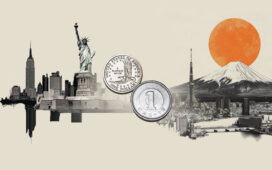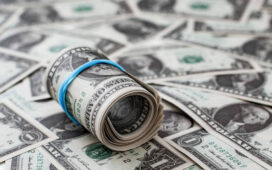
Although Treasury Secretary Scott Bessent has denied any official move toward a weak dollar policy, market analysts argue the administration’s rhetoric and actions suggest otherwise. (AI Generated Image)
–
The US dollar has fallen more than 10.7 per cent against major global currencies in the first half of 2025 — the worst start to a calendar year since 1973, according to the ICE US Dollar Index. The sharp decline comes despite record highs in US equity markets, and signals mounting investor concerns over policy uncertainty, central bank independence, and the future of the dollar as the world’s reserve currency, said a TOI report.
Economists and market strategists attribute the drop to a combination of unpredictable economic decisions by President Donald Trump, political attacks on the Federal Reserve, and growing moves by other nations to diversify away from the greenback. The situation has reignited fears of prolonged financial instability and a possible recalibration of global monetary dynamics.
“It’s US exceptionalism basically falling by the wayside and the rest of the world playing catch-up,” said Erik Nelson, macro strategist at Wells Fargo, in a comment to AFP. He added that the trend reflects growing strength in foreign economies, particularly across Europe and Asia, where aggressive fiscal and monetary measures are fuelling relative recovery.
The euro has surged more than 13 per cent in 2025, supported by Germany’s fiscal stimulus and the European Central Bank’s rate cuts. Meanwhile, long-term US Treasury yields have climbed, signalling investor scepticism about the government’s fiscal discipline and inflation trajectory.
Joseph Brusuelas, chief economist at RSM US, warned that the dollar’s retreat could mark the beginning of a “multi-year unwinding” of its 14-year bull run. “Investors are rethinking their dependence on the dollar as a safe haven,” he added.
At the heart of the sell-off lies growing global unease with US economic leadership. Harvard economist Kenneth Rogoff, author of Our Dollar, Your Problem, pointed to a clear shift in strategy by countries such as China, which are accelerating moves to reduce dollar exposure. “We’ll likely see a period of considerable financial volatility, largely centred around the chaos in the United States,” Rogoff noted.
Concerns over the independence of the Federal Reserve have been especially damaging. President Trump’s repeated public attacks on Fed Chair Jerome Powell — including calling him “a stupid person” and demanding rate cuts of “at least two to three percentage points” — have raised alarms among institutional investors and global policymakers.
Although Treasury Secretary Scott Bessent has denied any official move toward a weak dollar policy, market analysts argue the administration’s rhetoric and actions suggest otherwise. Jason Schenker of Prestige Economics remarked that “lower interest rates and a weaker dollar align with the Trump administration’s push for domestic manufacturing and economic self-sufficiency.”
In a recent episode, Trump abruptly reversed new tariffs within a week of announcing them, after a market dip caused by a bond sell-off. He later backtracked on threats to remove Powell, further muddling investor expectations.
Despite the currency’s steep fall, US stock indices like the S&P 500 and Nasdaq have hit record highs, driven by tech sector resilience and retail participation. But economists warn this disconnect may not last. “Markets have so far shrugged off the dollar’s weakness, but it’s a fragile balance,” said one New York-based fund manager, who asked not to be named.
The broader implication is a potential erosion of the dollar’s global status, which underpins much of America’s financial influence. Central banks in Russia, China, and parts of the Middle East are quietly building alternative reserve baskets, while trade settlements in non-dollar currencies have been increasing, especially in energy and commodities.
As volatility spreads through foreign exchange and bond markets, policymakers face a delicate task of rebuilding confidence without appearing to capitulate to political pressure. For now, markets are watching whether the decline in the dollar is an early warning sign — or the beginning of a structural realignment in global finance.



